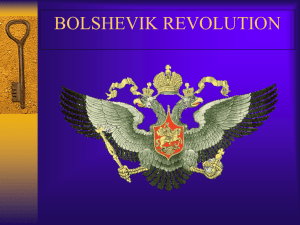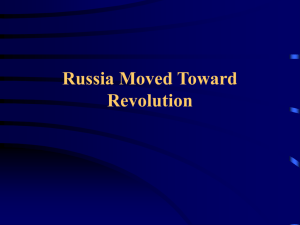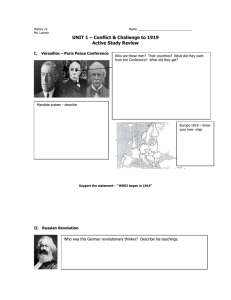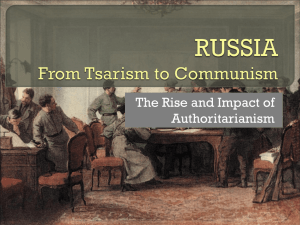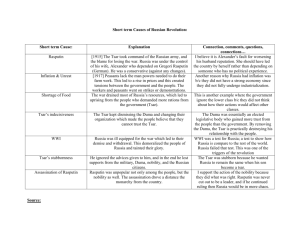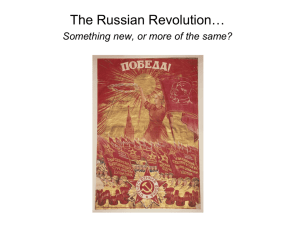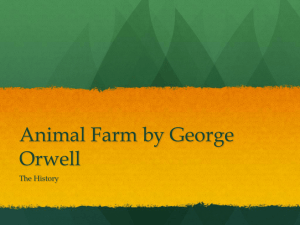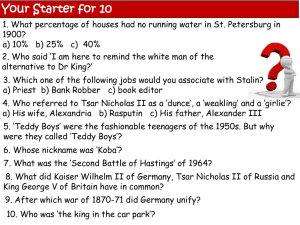RussianRevolutionPreStalin
advertisement
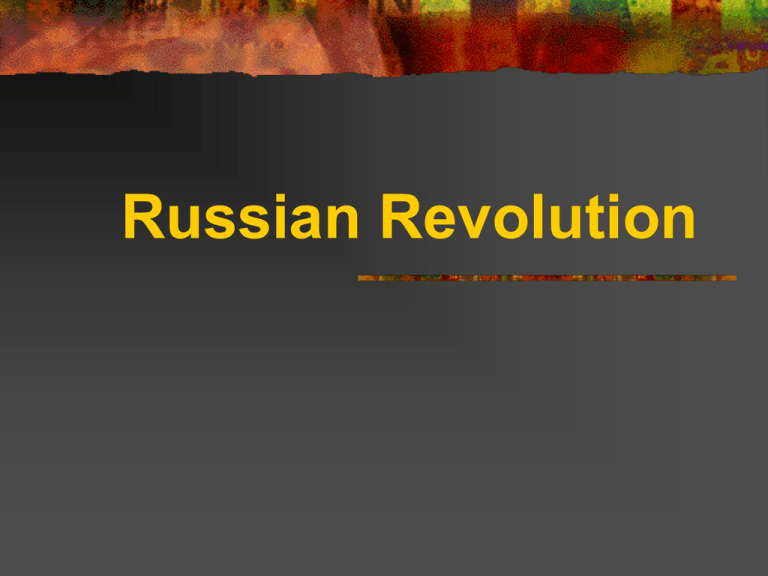
Russian Revolution Russian Government Before Revolution Monarchy: The Czar (Tsar) Until 1905 the Tsar's powers were unlimited. Russia had no constitution, no political parties or voting A strong secret police terrorized the people and ensured loyalty to the tsar Tsar Nicholas II (1894) Last Tsar of Russia Nicholas II was a harsh and weak ruler The Russian economy was bankrupt because of the Russo-Japanese War (1904-5) Then because of WWI (1914) Tsar Nicholas II and Family Russo-Japanese War (1904-1905) Dispute over Manchuria with Japan (Japan won it… and then wanted more in the 1930s) Shook national confidence in their progress and rule of Tsar; revolutionary feelings started boiling Japanese Propaganda Bloody Sunday (1905) Russia and World War I Russia was Germany’s Eastern front and suffered early losses at Tannenburg The war was wildly unpopular Rationing of food led to starvation Nicholas II left St. Petersburg to lead the war effort This left his wife Alexandra at home under the influence of a strange man named Rasputin Rasputin Rasputin with Admirers February Revolution (1917) 1917- protests spread through St. Petersburg and the Royal palace was taken over Tsar Nicholas abdicated Provisional government (Duma) takes control led by Alexander Kerensky Provisional government was unpopular after decision to stay in WWI October (Bolshevik) Revolution1917 Led by VIadmir Lenin: “Peace, Bread, and Land” Popular with peasants Began a Civil War in Russia from 19171923—ultimately overturned the Provisional Government and created the Soviet Union in 1922 Civil War between Bolsheviks (red) and Mensheviks (white) 1918 1918 March The Bolsheviks accept the peace of Brest-Litovsk, ending WWI with Germany 1919-1920 1919 White Armies (Royal and Menshevik troops) attack the Reds (Bolsheviks) from all directions The far eastern front in Siberia was particularly nasty Wiki: Russian Civil War Grain was “requisitioned” (read: taken) from farmers as needed 1920- Bolsheviks win Casualty Numbers in the Civil War 300,000 military deaths (red & white) 450,000 disease deaths in the military 250,000 executions of “enemies of the people” 3-500,000 Cossacks 100,000 Ukrainian Jews 3,000,000 died of typhus in 1920 alone 6,000,000 died of starvation 1920-1921 More Casualty Stats Population in northern towns declined 24% Agriculture happened more in the south, and railway lines were sparse or destroyed heading north Rule of Lenin 1920-1924 Economic Reforms included the New Economic Policy (NEP) 1921 -moderate mix of capitalism and socialism Individuals could own small properties, the government would run banks, trade, large industries Instead of “requisitioning” grain from farmers, a set “tax” amount was required Lenin’s Politics Political Reforms -Bolshevik party became the Communist Party -Russia becomes the United Soviet Socialist Republics (USSR) Moved away from full nationalization of the state Said it was “state capitalism” the final step before full socialism Communism A Form of Socialism Central Planning of the Economy by the State Gov’t (Communist Party) makes decisions on individual jobs and pay 1924 Lenin Dies, leaving a power vacuum Leon Trotsky vs. Joseph Stalin Stalin takes control Now must decide how he will maintain power Decides to create a totalitarian state Characteristics of a Totalitarian State Dictatorship- Absolute Authority Dynamic Leader- Vision for the nation State Control Over All Sectors of Society State Control Over the Individual Business, Family Life, Labor, youth groups, housing, religion, education, the arts Obedience Denies basic liberties Organized Violence Uses force to crush opposition Stalin’s Totalitarian State State Control of the Economy Police Terror Control of the individual Propaganda (socialist realism) Great Purge, crush opposition Religious Persecution 5 year plan, collective farms Molding peoples minds Education Controlled by the government http://www.marxists.org /reference/archive/stalin/ works/1937/12/11.htm

![Leader_Analysis_Sheet_Peter_the_Great[1]](http://s3.studylib.net/store/data/009220992_1-b864ff548a7d360a25262ba94c316f4a-300x300.png)

